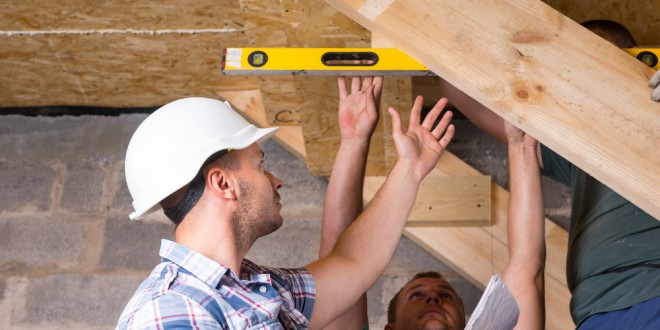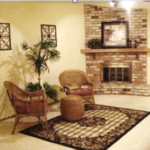
The latest projection from the Joint Center for Housing Studies’ Leading Indicator of Remodeling Activity (LIRA) calls for a slight slowing in annual growth in home improvement and repair expenditures will rise 6.7 percent at $317 billion, a strong but slight slowing of the 6.9 percent growth estimated for 2016.
Remodelers are anticipating another year of widespread revenue growth in their renovation and design businesses in 2017 that could grow their annual gross revenue by 10-12 percent on average, compared to 8-10 percent in 2016, according to the latest survey by Houzz Inc., a leading platform for home remodeling and design.
The updated LIRA release shows lower and less cyclical growth in homeowner improvement and repair spending in 2014 and 2015, a somewhat lower market size estimate, and also more modest projections for remodeling market growth in 2017.
Previously, the LIRA estimated a homeowner improvement and repair market size of $305 billion in 2016 and projected spending growing to $326 billion by the third quarter of this year. Now with the replacement of AHS-based benchmark data for previously modeled benchmark estimates, the LIRA model indicates remodeling activity reached $297 billion in 2016 and projects spending will reach $317 billion this year. The implication of slightly slower growth in actual remodeling and repair spending is a reduction in market size projections for 2017 of 2.9 percent or $9.5 billion.
“Although above-average growth is expected this year, we’ve lowered our projection for market size somewhat with the recent release of new benchmark data from the American Housing Survey,” says Abbe Will, Research Analyst in the Remodeling Futures Program at the Joint Center. “Spending in 2014 and 2015 was not quite as robust as our LIRA model estimated, growing 11.3 percent over these two years compared to 14.3 percent as estimated.”
Remodelers see 10 to 12 percent growth
The majority of home renovation and design businesses on Houzz anticipate even stronger growth in the year to come. Businesses expect their annual gross revenue to grow 10-12 percent on average, compared to 8-10 percent in 2016. Architects are the exception, anticipating seven percent growth in 2017, in line with 2016 expectations. The majority of firms also anticipate profits to grow in 2017 (69-76 percent), again with architects less bullish (57 percent), according to the Houzz survey.
“Based on some estimates, residential remodeling activity in 2016 surpassed the pre-recession peak, and by far outpaced the recovery of the new residential construction sector. Several market fundamentals propelled this expansion, including aging housing stock, recovered home prices, homeownership and home buying concentrated in older and more established households, and finally a massive Baby Boomer population planning retirement in current homes, among others,” said Nino Sitchinava, principal economist at Houzz. “Houzz research finds that the steady growth of the residential remodeling spend driven by homeowners tackling multiple projects at a time, embarking on projects with a large scope, and installing high end finishes. This trend is likely continuing into 2017.”
Other key findings of the Houzz survey:
• Investing in growth. To support revenue growth in 2017, firms across all industry groups plan to focus on larger budget projects (50-63 percent) and to invest more in marketing (45-56 percent). Other common strategies include increasing fees, improving employee productivity and hiring more staff. Company headcounts are also expected to rise in 2017 for two in five general contractors, design-build firms, specialty building and renovation firms (40-46 percent), and one in four design-focused companies including architects, designers and decorating firms (23-26 percent).
• 2016 a banner year. A third or more of firms across industry groups report that 2016 was the best year in the past ten years (since 2007). Two-thirds report an increase in revenue in 2016 (63-70 percent), and more than half report an increase in profits (53-59 percent). Overall, companies report more moderate average annual rates of revenue growth in 2016 (7-10 percent) compared to 2015 (9-11 percent) and 2014 (10-13 percent).
• Rising labor & materials costs. While revenue increased in 2016, the cost of business also increased, according to three in five or more companies across industry groups (58-76 percent), primarily driven by the cost of labor and products and materials. Other commonly cited cost drivers are advertising and marketing expenses, subcontractor fees and business insurance premiums. Rising business costs were among the top business challenges in 2016 cited by companies in nearly every industry group, along with shortage of employees or subcontractors and managing consumer expectations and budget concerns






